The Volkswagen Atlas and Subaru Ascent exist for a similar reason. Happy customers were procreating their way out of the Volkswagen and Subaru model trees. Adding a three-row SUV made sense. The three-row SUV also has become America’s hottest automotive segment suddenly. Both cars have been popular.
The Ascent debuted strongly for Subaru in 2018, selling about 36,000 over the back half of 2018. The Atlas doubled its sales in 2018, outsold the entire Golf family Stateside, and was Volkswagen’s third-best selling U.S. vehicle behind the Tiguan (another three-row SUV) and the Jetta.
Subaru and Volkswagen have strong reputations for value. Both pursue a similar customer at a similar price point. It seemed right to give their au courant big crossovers a whirl and compare them. I’m the ideal test subject, as I am that target customer. My wife and I are in our mid-30s, parents, both own Volkswagens, and have some potential brood expansion in the near to intermediate future.
One must get the full luxury experience to deliver an authoritative automotive review. So, I drove the top-level trims of both the Atlas (V6 SEL Premium w/4MOTION) and the Ascent (Touring). Here are my thoughts.
STYLE
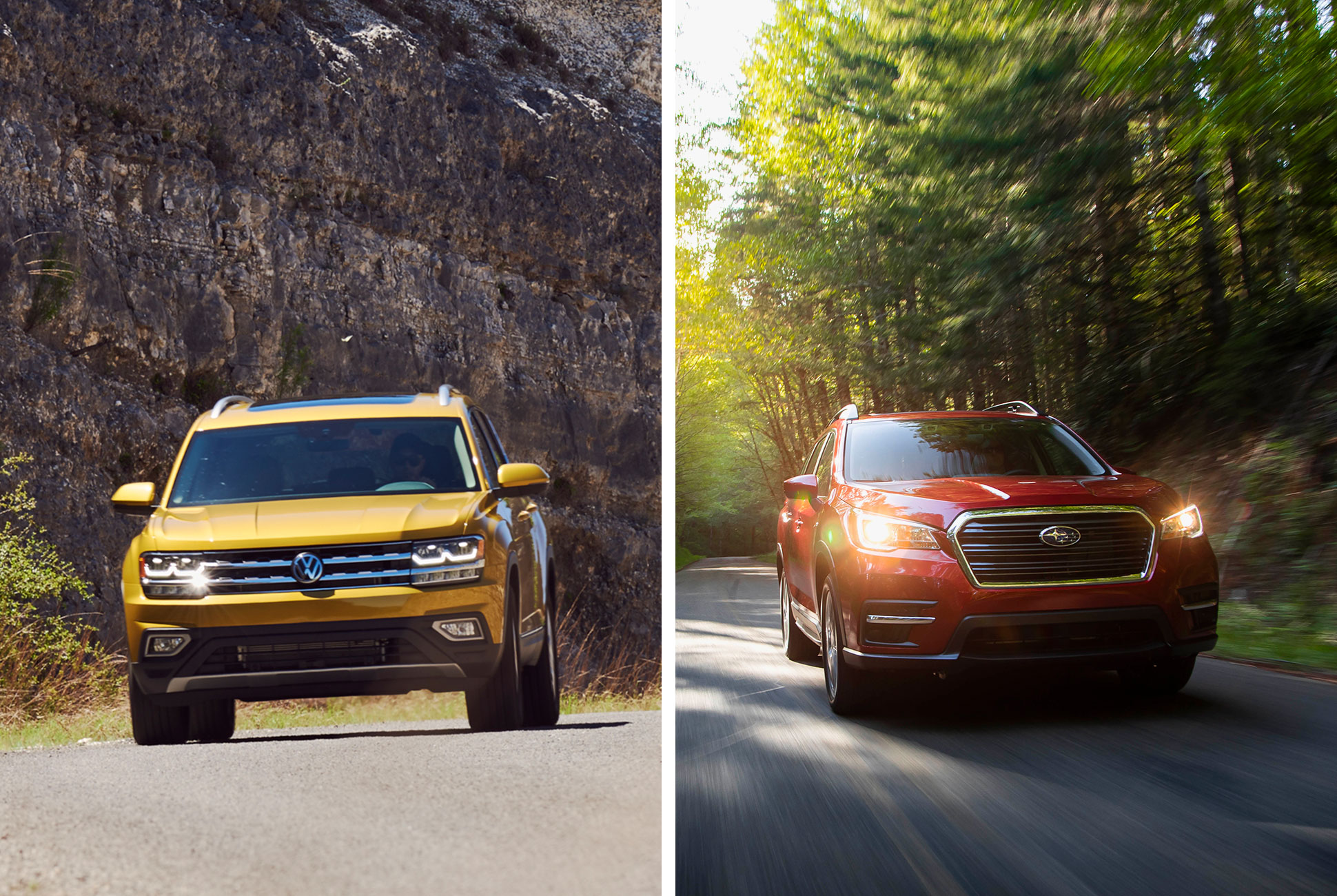
VW and Subaru approached the large SUV differently. The Atlas is Volkswagen’s American-made car for Americans. It takes its cue less from the Volkswagen tree and more from other American SUVs. Bold lines aim for a smart, upscale appearance. It has a commanding grille that looks a tad discordant with a VW logo. My wife said she felt fancy in it when we took it out for a date night.
Subaru, in contrast, made a bigger Subaru. The Ascent looks like the instruction was to make a bigger Forester and designers executed that almost too literally. It maintains the company’s rugged, low key, family car aesthetic. It’s the three-row SUV the rabid Subaru base would want.
Neither interior bowled me over. The Atlas had the better, cleaner interior design. But, cheap plastic in certain places ruined the “VW interiors look like an Audi” mantra. The Subaru interior felt busy and a bit dated. My Dad asked me whether I was flying an airplane when he saw the center console. Though, I do think the Ascent incorporated high-end materials like wood-grain paneling better.
Advantage: Tie
Read Now: The Elegant Range Rover Velar Is an Off-Roader for Design Lovers
DRIVING DYNAMICS
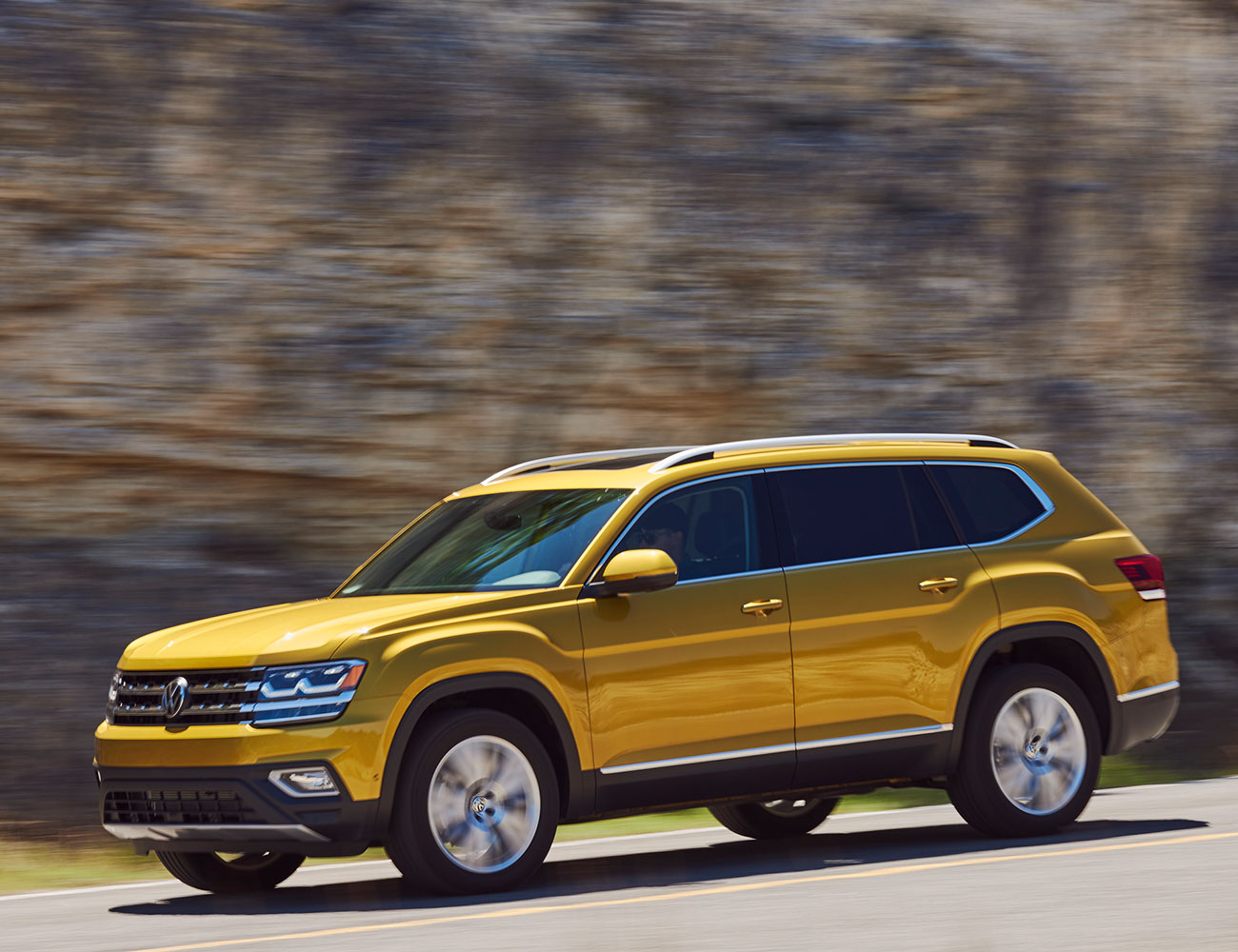
Volkswagen and Subaru swapped stereotypes here. The Atlas got most of the little things right. It was a comfortable cruiser. The suspension delivered a much smoother ride over Michigan potholes. The steering felt better calibrated than the Tiguan. The Atlas drove like a lighter car than it was. But, the 3.6L VR6 was all but lifeless. When pushed, the engine groaned and nothing much happened. That was with a more or less empty load.
Subaru made a better choice with the turbocharged 2.4L Boxer 4. The Ascent had 16 fewer horsepower than the V6 Atlas. But, it had more torque (277lb-ft to 266lb-ft). The Ascent wasn’t quick per se. It won’t change any strong opinions about the CVT. But, it responded more. Neither was as engaging as the Enclave Avenir I drove last summer.
Both AWD systems withstood school-closing level Michigan winter weather. The Atlas and the Ascent felt composed in ice, snow, and slush. No special modes required.
Advantage: Ascent
Read Now: 2019 Mazda CX-9 Review: The Best SUV I’ve Ever Driven
PRACTICALITY
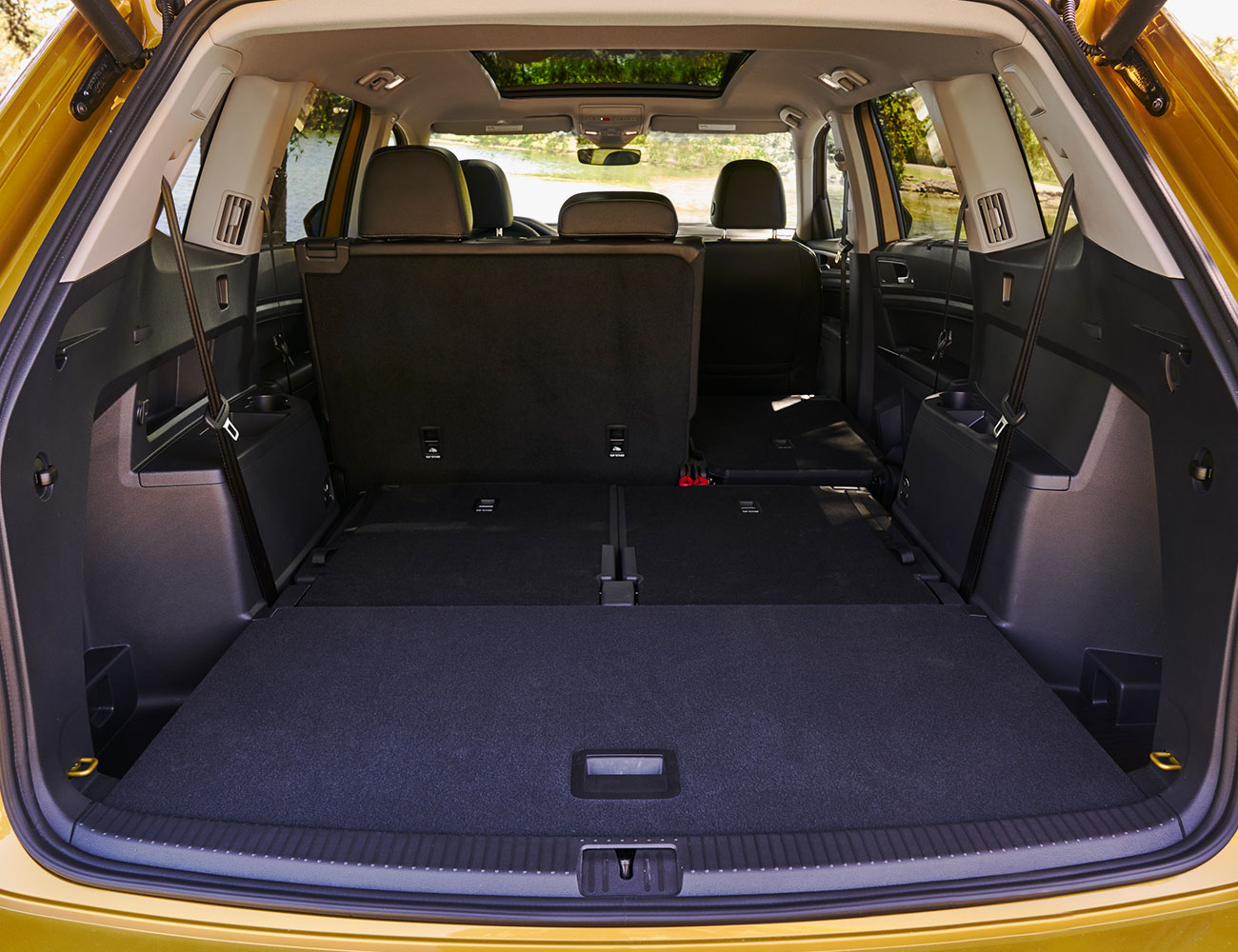
Again, Volkswagen and Subaru swapped stereotypes. The Atlas felt like a cathedral inside. The interior volume almost unnerved me. I had to adjust my driving position because the armrests were so far from the steering wheel. It reminded me of driving an American truck. There was space in the driver’s seat for some rigorous upper body calisthenics.
With both rows folded, the Atlas has an extra 10 cubic feet of potential cargo space (96.8 to 86). That meant, with all seats up, it had a more viable third row and a reasonable-sized trunk behind it. The Ascent trunk with the seats up felt cramped. I had to lower the seats to fit a box of diapers and a couple of small baby gifts.
The Atlas had the more intuitive power liftgate. The Ascent edged the Atlas 19-17 for the number of cupholders. Hydrate to your heart’s content, third-row passenger. Neither car fit in my garage.
Advantage: Atlas
Read Now: The New Rolls-Royce Cullinan SUV Is a Sure-Footed Hulk and Glamorous to a Fault
ANNOYANCES
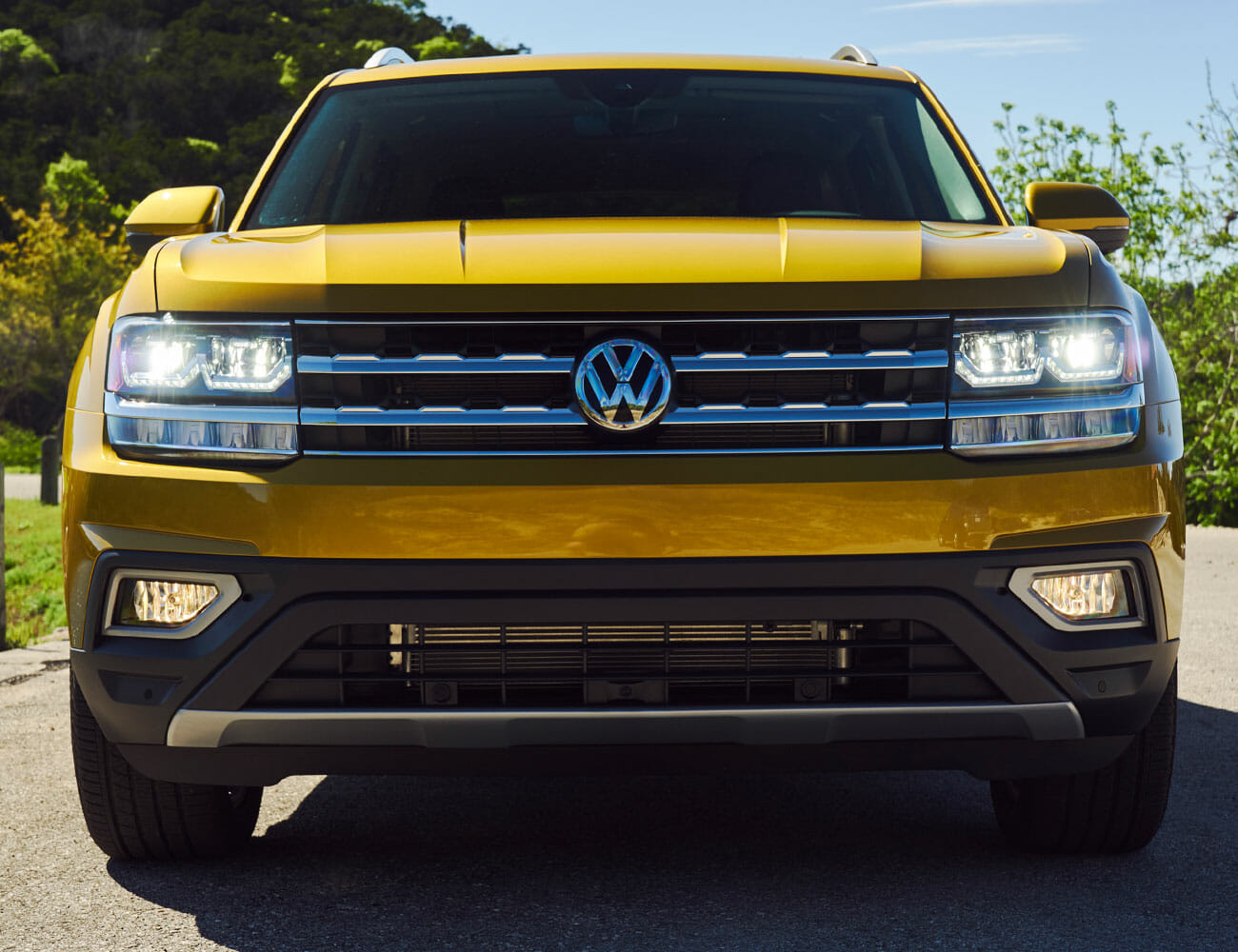
The Ascent had some not so charming quirks. I abandoned the “auto” lights setting after the second time the lights failed to turn on at night. My fob would not work until the keyless entry activated. The keyless entry activated on the driver’s side. So, I had to walk around the car to unlock it, then walk back around to put my son in his car seat.
EyeSight deactivated and showed false alarms after it snowed. Opening any door sent a spray of snow/ice into the cabin. Shutting down the engine cut power to the phone, but not the radio. So, if you were listening to your phone audio, you got blitzed by whatever was on the radio no matter what. I also felt some wheel rubbing on super sharp turns in a parking garage.
The Atlas had far fewer issues. VW’s greatest innovation over the past decade has been protecting the rearview camera inside the logo. The Atlas doesn’t have that feature. The inevitable occlusion happened during weather. The Atlas displays elaborate graphics for changing driver modes. Those graphics supersede everything else on the infotainment display, including the rearview camera. Don’t change to “Snow Mode” before reversing.
Advantage: Atlas
Read Now: Lamborghini Urus Review: Truly as Crazy as It Looks
EFFICIENCY
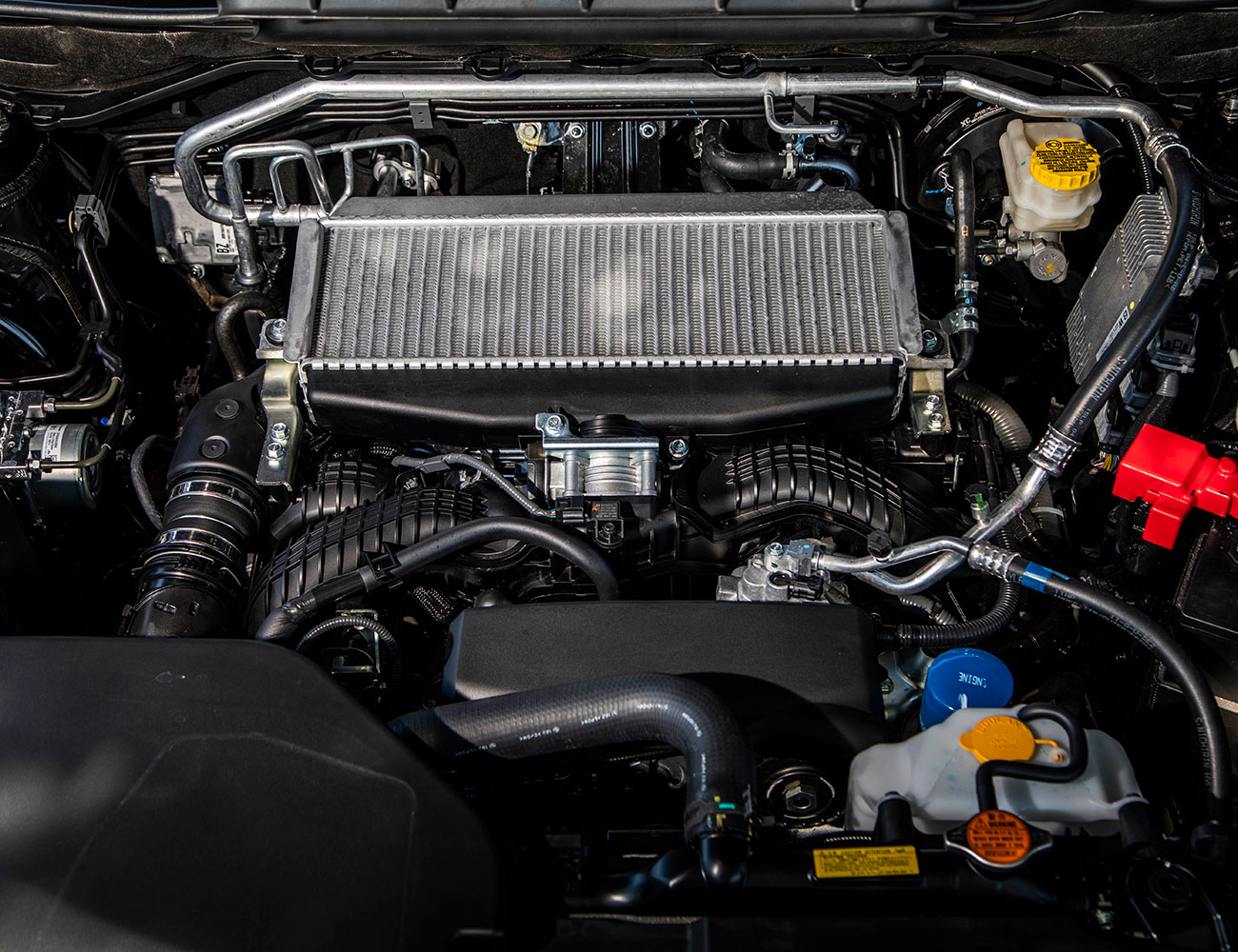
With the four-cylinder, the Subaru had the better EPA rating (22mpg combined) vs. the Atlas (19mpg). Even with significant highway stretches, I could not match those numbers for either vehicle in real-world driving.
I averaged about 17mpg flat with the Atlas, which was the EPA city range. It disappointed to get that poor gas mileage and not get any performance for it. With the Ascent, I managed a hair under 18mpg over a week, a long way off the EPA measure. Cold weather may have played a role. It did sound like the Boxer 4 was laboring a lot at low speeds.
Advantage: Ascent, barely
Read Now: Audi E-Tron Review: Simply Put, This Is a Great Car
VALUE
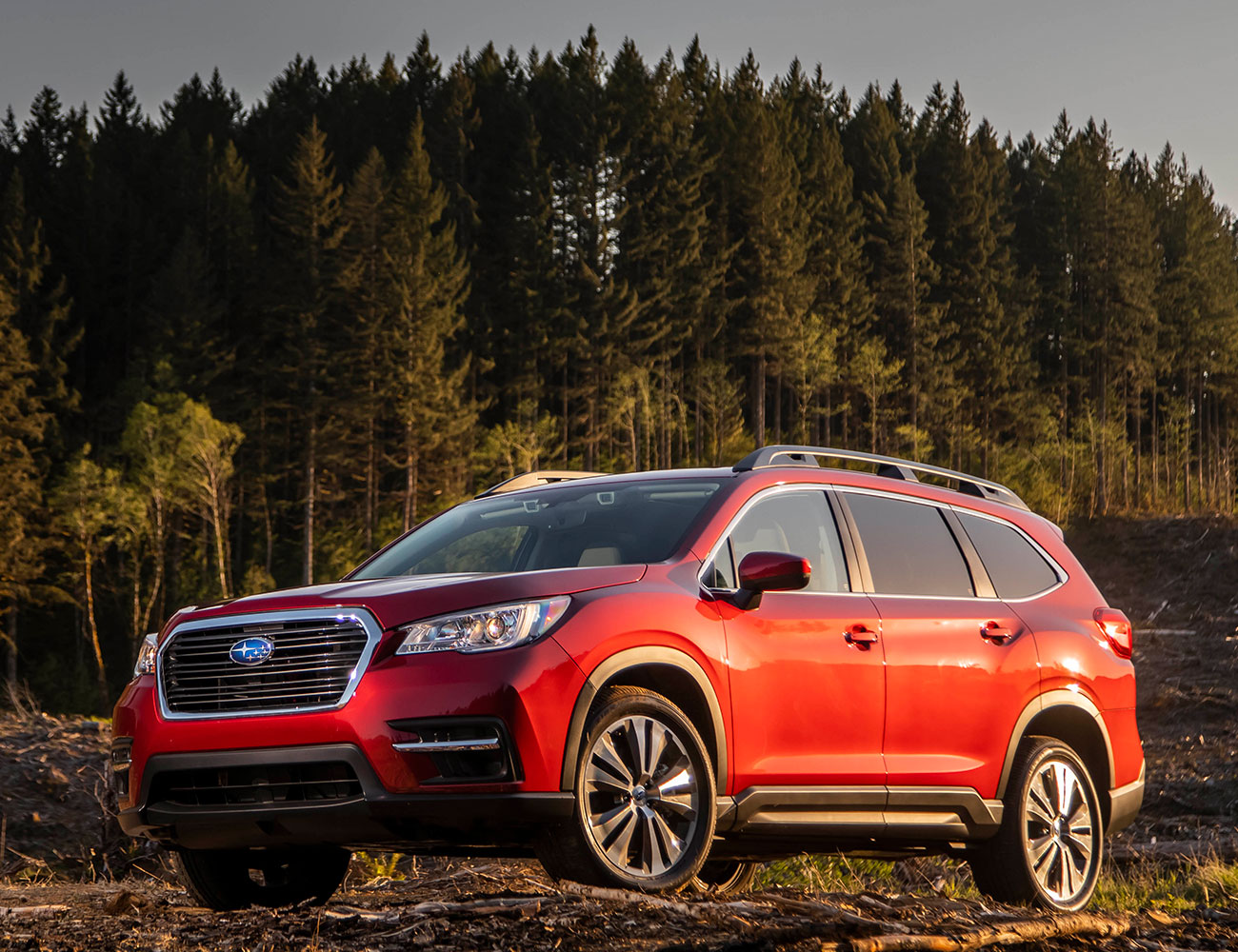
Of the two top-end trims, the Atlas SEL Premium w/4Motion ($50,320) with options for second-row captain’s chairs ($695) and black wheels ($235) was nearly $5,000 more expensive than the Ascent Touring ($45,670). The Ascent was also cheaper on the bottom end. Technically, there’s a 2.0T four-pot S version of the Atlas starting at $30,895. But, the base Ascent with the same engine as the Touring and AWD starts at $31,995. A comparable V6 w/4MOTION Atlas starts at $34,095. You can get an upgraded “Premium” trim Ascent for about that same price.
Essentially, Volkswagen charged a significant premium for 4MOTION while AWD is standard for Subaru. Subaru also offers features lower down the trim range. It’s too early to predict resale value. But, that tends to be a strength for Subaru and not as much of one for Volkswagen.
Advantage: Ascent
Read Now: Volkswagen Tiguan Review: The Style You’d Expect from VW but None of the Charm
VERDICT
I would aim for the middle trims with both crossovers. The base models miss critical comforts. The super-lux versions don’t add that much luxury, even if I do love a good ventilated seat. For the Ascent, I would stick with the Premium ($34,195) or Limited ($38,995) trims. For the Atlas, I would choose one of the V6 SE w/4MOTION trims under $40,000. Nearing $50,000 for a Volkswagen seems excessive when you can buy a 7-seater Land Rover Discovery with 60hp more for $55,000.
Choosing between them was hard. Both present compelling arguments. I would buy both over the Enclave for the cost savings and ability to see out the rear of the vehicle. The Atlas looks fancier. It’s more comfortable. It’s more practical. It’s less annoying. But, I would go with the Ascent. I buy cars to drive them. The Atlas engine would bother me more longterm than Ascent weirdness. Understatement, value, and torque are why we own two Volkswagens. But, it’s the Subaru that provides those qualities in this segment. If the Atlas had a better engine, I might reconsider.
I won’t be trading up for an Ascent or an Atlas in the near future, as neither would fit in my garage.
Specs
2019 Subaru Ascent Touring
Powertrain: 2.4-liter turbocharged Boxer 4; CVT; all-wheel-drive
Horsepower: 260
Torque: 277 lb-ft
Curb Weight: 4603 lbs
EPA Ratings city/highway: 20/26 MPG
Price: $31,995 (base MSRP); $45,670 (as tested)
2019 Atlas V6 SEL Premium w/4MOTION
Powertrain: 3.6-liter VR6 with FSI; eight-speed automatic); all-wheel-drive
Horsepower: 276
Torque: 266 lb-ft
Curb Weight: 4502 lbs
EPA Ratings city/highway: 17/23 MPG
Price: $30,895 (base MSRP); $50,320 (as tested)

